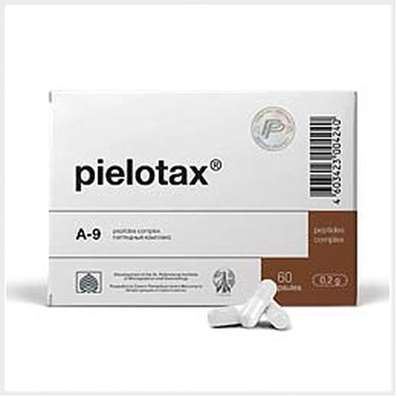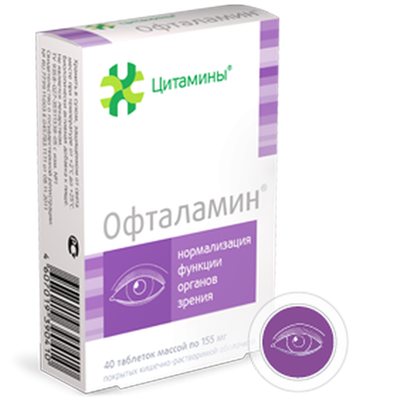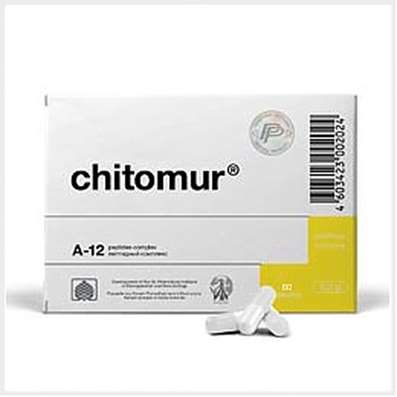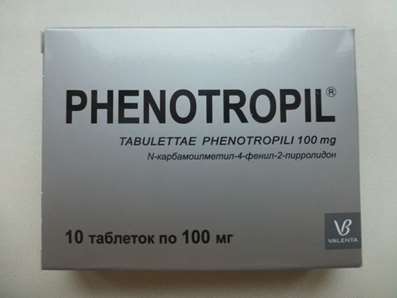Instruction for use: Sirolimus
I want this, give me price
Trade name of the drug – Rapamune
The Latin name of the substance Sirolimus
Sirolimusum (genus. Sirolimusi)
Chemical name
3S, 6R, 7E, 9R, 10R, 12R, 14S, 15E, 17E, 19E, 21S, 23S, 26R, 27R, 34aS) -9,10,12,13,14,21,22,23,24,25 , 26.27.32,33,34,34a-Hexadecahydro-9,27-dihydroxy-3 - [(1R) -2- [(1S, 3R, 4R) -4-hydroxy-3-methoxycyclohexyl] -1- Methylethyl] -10,21-dimethoxy-6,8,12,14,20,26-hexamethyl-23,27-epoxy-3H-pyrido [2,1-c] [1,4] -oxaazaclogonetracontin-1,5 , 11.28.29 (4H, 6H, 31H) –pentone
Gross Formula
C51H79NO13
Pharmacological group:
Immunosuppressive drugs
CAS Code
53123-88-9
Application of pregnancy and breastfeeding
The action category for fetus by FDA is C.
Model clinical-pharmacological article 1
Pharmacotherapy. Immunosuppressive drug, the mechanism of action which differs from other immunosuppressants: suppresses the activation of T cells by blocking Ca2 + -mediated and Ca2 + -independent intracellular signaling. It binds to a specific cytosolic protein - immunophilin (FK-binding protein-12 - FKPB-12), the FKPB-12-sirolimus complex inhibits the activation of the mammalian target of rapamycin (mTOR) kinase. Inhibition of mTOR results in blockade of several specific signal conversion pathways and, ultimately, suppression of lymphocyte activation and decreased immunity. Reduces the activity of T- and B-lymphocytes and suppresses the rejection of the allogenic graft.
Pharmacokinetics. After oral administration, it is rapidly absorbed, TCmax - 1 h after a single intake by healthy people and 2 h after repeated oral administration by patients who are in stable condition after allogeneic kidney transplantation. Systemic bioavailability with simultaneous reception with cyclosporine - about 14%. At repeated reception the average concentration of sirolimus in blood increases approximately in 3 times. Fat-rich food reduces Cmax by 34%, increases TCmax by 3.5 times and AUC by 35%. When the preparation is diluted with water or orange juice, Cmax and AUC do not change significantly (grapefruit juice affects CYP3A4-mediated metabolism, and therefore it can not be used to dilute the drug). With repeated oral administration of the drug, patients after transplantation of kidney T1 / 2 - 46-78 hours, and Css are created after 5-7 days. The coefficient reflecting the ratio of blood concentration to plasma concentration (C / P) is 36 (ie, the drug is largely accumulated in blood cells). The average concentration of sirolimus in the blood was 9 ng / ml (5-14 ng / ml) after taking in a dose of 2 mg / day and 17 ng / ml (10-28 ng / ml) after taking a dose of 5 mg / day. Sirolimus is a substrate for cytochrome CYP3A4 and for P-glycoprotein. Metabolised by O-demethylation and / or hydroxylation. In the blood there are 7 low-active (sirolimus more than 90% determines the immunosuppressive effect) of the main metabolites, including hydroxyl, demethyl and hydroxy-demethyl. Output is 91% with bile and only a small part (2.2%) - by the kidneys. In patients with hepatic insufficiency (from mild to moderate severity - A or B on the Child-Pug scale), the mean values of AUC and T1 / 2 are higher (by 61 and 43%, respectively), and the average clearance value is 33% less. The pharmacokinetics of sirolimus has not been studied in patients with severe hepatic insufficiency. Pharmacokinetic parameters in groups of patients with different severity of renal dysfunction (including those on hemodialysis) are similar.
Indication. Prevention of graft rejection (in adult patients with low and moderate immunological risk after kidney transplantation in combination with GCS and cyclosporine).
Contraindications. Hypersensitivity, lactation, children and adolescence.
Carefully. Pregnancy.
Action category on the fetus. C
Dosing. Inside. It is recommended to appoint in combination with GCS and cyclosporine for 2-3 months. Supportive therapy, if necessary, can be continued in combination with GCS without cyclosporine.
Initial therapy (2-3 months after transplantation): during the usual mode of administration, a saturating dose of 6 mg is administered once for 48 hours after transplantation, followed by a maintenance dose of 2 mg / day. In the future, the dose should be chosen so that Cmin in the blood is within 4-12 ng / ml (chromatographic method).
Cmin cyclosporine in the blood for the first 2-3 months after transplantation should be maintained at 150-400 ng / ml (monoclonal method of determining the concentration).
Supportive therapy: cyclosporine should be withdrawn within 4-8 weeks and the dose of sirolimus should be selected depending on its concentration in the blood. It is recommended to maintain Cmin in the blood 12-20 ng / ml (chromatographic method).
In patients whose attempt to discontinue cyclosporine was unsuccessful (can not be performed), the administration of cyclosporine in combination with sirolimus can not last more than 3 months after transplantation. In such patients sirolimus should be canceled and an alternative mode of immunodepression is prescribed.
Elderly patients, as well as patients with CRF and liver failure of mild to moderate severity, dose adjustment is not required.
Side effect. During therapy, most patients simultaneously received cyclosporine and GCS (the incidence of side effects refers to the combination of these drugs).
Very often (10%): lymphocele.
Often (1-10%): a violation of wound healing; Edema; Development or exacerbation of fungal, viral and bacterial infections (including those caused by mycobacteria and the Epstein-Barr virus).
Hepatotoxicity, including fatal necrosis of the liver (when the therapeutic interval of Cmin sirolimus in the blood is exceeded).
Overdose. Symptoms: increased side effects.
Treatment: symptomatic (due to the poor solubility of sirolimus in water and a high degree of binding to erythrocytes, it is practically not removed during dialysis).
Interaction. Sirolimus undergoes intensive metabolism under the influence of CYP3A4 isoenzyme in the wall of the intestine and liver, and is also a substrate for the system of elimination of many drugs - P-glycoprotein (P-GP) of the small intestine.
Ciclosporin (substrate CYP3A4): the appointment of a microemulsion form of cyclosporin A 4 hours before the administration of sirolimus increases the AUC, Cmax and TCmax of the latter by 1.8, 1.4 and 1.6 times, respectively. The administration of sirolimus simultaneously or after 4 hours after administration of cyclosporine does not affect the kinetics of cyclosporine in healthy individuals (sirolimus should be administered at intervals of 4 hours after administration of cyclosporine).
Rifampicin (inducer CYP3A4) reduces the concentration of sirolimus in the blood after a single oral intake of 10 mg, increases the clearance by approximately 5.5 times, reduces AUC and Cmax by approximately 82 and 71%. Against the background of the simultaneous administration of rifampicin, the initial dose of sirolimus should be 8 times higher than the maintenance dose, and for 5-7 days after the dose adjustment it is necessary to regularly determine the concentration of sirolimus. After the withdrawal of rifampicin, the dose of sirolimus should be gradually reduced to the original maintenance dose.
Ketoconazole (inhibitor of CYP3A4): repeated administration of ketoconazole increases Cmax, TCmax and AUC of sirolimus by 4.3, 1.4 and 10.9 times, respectively. With the simultaneous administration of ketoconazole, the initial dose of sirolimus should be reduced to 1/6 of the maintenance dose, and the concentration of sirolimus should be determined regularly for 5-7 days after the dose adjustment. After the withdrawal of ketoconazole, the dose should be gradually increased to the original maintenance dose.
Diltiazem (inhibitor CYP3A4): simultaneous administration of 10 mg of oral solution of sirolimus and 120 mg of diltiazem significantly changes the kinetics of sirolimus: Cmax, TCmax and AUC, respectively, increase by 1.4, 1.3 and 1.6 times. Sirolimus does not affect the pharmacokinetics of diltiazem and its metabolites - deacetylldithiazema and desmethylditiazem. When appointing diltiazem it is necessary to measure the concentrations of sirolimus in the blood and, if necessary, adjust the dose of the latter.
Oral contraceptives: Clinically significant pharmacokinetic interactions between sirolimus and 0.3 mg nororextrel / 0.03 mg ethinyl estradiol were not detected (in spite of this, it can not be ruled out that the pharmacokinetics may change, which can affect the efficacy of oral contraceptive with prolonged sirolimus therapy).
Inhibitors of CYP3A4 inhibit metabolism and increase the concentration of sirolimus in the blood (BCC: nicardipine, verapamil, antifungal drugs: clotrimazole, fluconazole, itraconazole, macrolide antibiotics: clarithromycin, erythromycin, prokinetic drugs: cisapride, metoclopramide, and some other drugs: bromocriptine , Cimetidine, danazol, protease inhibitors: ritonavir, indinavir).
Inductors CYP3A4 accelerate the metabolism of sirolimus and reduce the concentration of sirolimus in the blood (carbamazepine, phenobarbital, phenytoin, rifabutin, rifampicin, St. John's wort preparations). Although in vitro sirolimus inhibits the cytoplasmic cytochrome cytochrome CYP2C9, CYP2C19, CYP2D6 and CYP3A4, CYP3A5 human liver systems, there is no reason to assume that the drug inhibits isoenzymes in vivo (this requires much higher concentrations of sirolimus than those observed with the administration of therapeutic Doses).
P-glycoprotein inhibitors reduce the excretion of sirolimus from intestinal cells and increase its concentration.
Grapefruit juice affects CYP3A4-mediated metabolism, and therefore its use is not recommended.
HMG-CoA reductase inhibitors, fibrates: should carefully monitor the signs of rhabdomyolysis.
Special instructions. Therapy should be carried out under the supervision of a physician with relevant experience in transplantology.
It is intended only for oral administration.
There is experience in prescribing sirolimus simultaneously with cyclosporine, azathioprine, mycophenolate mofetil, GCS and cytotoxic antibodies. Use in combination with other immunosuppressive drugs has been studied insufficiently, and the use of sirolimus in patients with high immunological risk of graft loss has also been poorly studied.
The available data are insufficient to recommend the current use of the drug in children and adolescents.
In patients with hepatic insufficiency, it is necessary to carefully monitor the Cmin sirolimus in the blood.
It is not recommended to administer simultaneously with strong inducers (eg rifampicin, rifabutin) or inhibitors (eg ketoconazole) of the cytochrome CYP3A4 system, unless the benefit of the therapy exceeds the risk associated with possible interaction (a particularly careful control of the Cmin sirolimus in the blood is required at the same time The appointment of inducers or inhibitors of the cytochrome CYP3A4 system, and after discontinuation of their administration).
Immunodepression increases susceptibility to infections (including opportunistic infections and sepsis leading to death), may cause the development of lymphoma and other malignant diseases, especially of the skin (exposure to sunlight and UV radiation should be limited through the use of protective clothing and the use of Tan with a high degree of protection).
Patients who did not receive antimicrobial prophylaxis described cases of pneumonia caused by Pneumocystis carinii (prevention should be performed within the first 12 months after transplantation).
Prevention of CMV infection is recommended to be performed within 3 months after transplantation (especially in patients with an increased risk of its development).
During the period of treatment, it is necessary to control the concentration of lipids in the blood (the appointment of sirolimus is accompanied by an increase in cholesterol and TG in the serum, which may require drug correction). In patients with established hyperlipidemia, all the pros and cons must be weighed before starting treatment, including sirolimus. Similarly, it is necessary to evaluate the feasibility of continuation of sirolimus therapy in patients with severe reflux hyperlipidemia. A limited number of patients have been shown to be well tolerated in combination with HMG-CoA reductase inhibitors and / or fibrates (carefully monitor the appearance of signs of rhabdomyolysis and other side effects of lipid-lowering drugs).
With simultaneous appointment with cyclosporine, it is necessary to monitor kidney function (in patients with hypercreatininaemia, appropriate correction of therapy is required). With the simultaneous appointment with other drugs that have nephrotoxicity, care must be taken.
Patients treated with cyclosporine and sirolimus for more than 3 months had a higher serum creatinine concentration and a lower CC than those treated with cyclosporine in combination with azathioprine (after a successful ciclosporin withdrawal, a lower creatinine concentration and a higher QC were observed compared with patients who continued Receive cyclosporin). Until further clinical data are available, continuous simultaneous administration of cyclosporine and sirolimus for maintenance therapy is not recommended.
There is no convincing data on the possibility of using sirolimus in pregnancy. Experimental studies have shown the embryo-and fetotoxicity of sirolimus (it should not be used during pregnancy, except in cases where there are absolute indications for its use, reliable contraception should be used during therapy and for 12 weeks after its termination).
It is not known whether sirolimus is excreted in women's breast milk (since it is possible to develop side effects in children, if it is necessary to prescribe the drug during lactation, breastfeeding should be stopped).
When stored in the refrigerator, the solution may become slightly cloudy (if this occurs, allow the solution to stand at room temperature, then gently shake, the presence of haze does not affect the quality of the product).
Optimum therapy requires control of the sirolimus concentration in all patients: when co-administered with cyclosporine, the majority of patients receiving 2 mg of sirolimus 4 hours after cyclosporine, Cmin sirolimus in whole blood was 4-12 ng / ml. The concentrations of sirolimus in whole blood should be determined particularly carefully in the following groups of patients: in patients with hepatic insufficiency, with the simultaneous administration of strong inducers or inhibitors of microsomal oxidation, as well as after completion of their administration, as well as with dose reduction or cyclosporin abolition.
In order to minimize concentration fluctuations, sirolimus must be taken at the same time (4 hours after the administration of cyclosporine) either with food or between its meals. It is advisable to change the syrrolim dosage regimen based on more than one determination of Cmin, measured no earlier than 5 days after the last change in its dose.
After cyclosporine withdrawal, the recommended Cmin of sirolimus in the blood, measured by the chromatographic method, should be in the range of 12-20 ng / ml. Cyclosporine inhibits the metabolism of sirolimus, when it is abolished as the intensity of microsomal oxidation recovers, the concentration of sirolimus will decrease. On average, the dose of sirolimus after cyclosporine withdrawal should be increased 4-fold: the absence of pharmacokinetic interaction (2-fold increase) and an increase in the need for immunodepression after cyclosporine withdrawal (2-fold increase). The rate of increase in the dose of sirolimus should correspond to the rate of ciclosporin withdrawal.
Recommended concentrations of sirolimus in whole blood are based on data obtained using chromatographic methods (using UV or mass spectrometric detection), which are approximately 20% lower than those obtained using the enzyme immunoassay (comparison of concentrations reported in literature sources and In a specific patient can be carried out only if the publications provide exhaustive information about the used method of analysis).
When choosing the dosing regimen of sirolimus, not only the control of the drug concentration, but also the clinical signs / symptoms, the results of the histological examination and the laboratory data are taken into account.

 Cart
Cart





